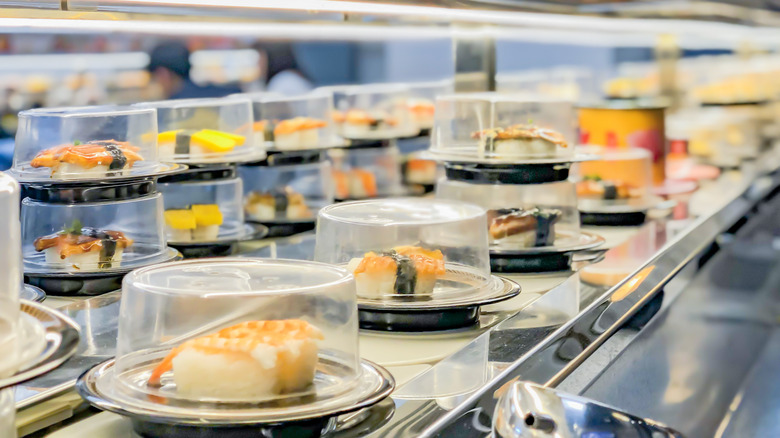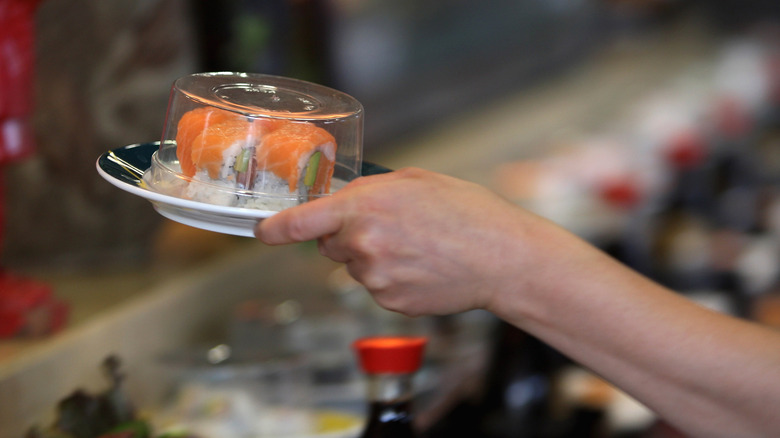The Basic Etiquette You Must Know For Conveyer Belt Sushi
You're not likely to meet internationally renowned sushi chefs like Jiro Ono, Eki Ichimura, or Yoshiharu Kakinuma behind the counter at places like these. Still, there is no underestimating the popularity of conveyor belt sushi — or kaitenzushi — restaurants, which provide a quick and easy way to get your sushi fix.
Conveyor belt restaurants can be found all over Japan, with chains like Katsumidori and Numazuko Ginza. In the U.S., Kura Sushi offers up a selection of sushi ranging from maki to different types of hand rolls and nigiri topped with shrimp, delicately grilled slices of beef, premium pieces of salmon, tuna, or Hokkaido scallop. If you're not in the mood for raw seafood, the restaurant might even have a selection of simple hot dishes like tempura, fried dumplings (gyoza), or fried rice.
While you can technically pick up a menu and order, the sushi is usually presented on a conveyor belt that runs the length of the sushi counter. Guests are allowed to pick and choose whatever they want, and they are charged according to the color or pattern of the plate the sushi is served on. In many cases, conveyor belt sushi restaurants will offer complementary pickled ginger and green tea.
Because conveyor belt sushi restaurants give guests a chance to interact directly with their food and with little to no assistance from wait staff, diners are also expected to follow a specific set of rules which ensures meals are served in an environment that is both clean and allows everyone to have a good time.
The dos and don'ts of dining at a conveyor belt restaurant
While it might be tempting to pick up a plate as it rolls by to take a better look at it, you're not allowed to touch anything on the belt unless you actually plan to take it. To find out what a dish is, look at the menu (which is usually in the form of a touch screen where you sit) because it will provide details about the sushi — from what it is to the way it has been prepared and how much it costs.
If, by any chance, nothing on the conveyor belt appeals and you've decided to custom order your sushi, remember to take it, and eat it, as a courtesy to the chef who made the order. And while you could take more than one plate, this is definitely frowned upon, as this can seem excessive — so be sure to stick to one plate at a time.
Once you're done with your sushi, set your plate to one side. These dishes are designed to stack properly, so there is no need to return empty plates to the conveyor belt. In fact, your plates need to stay with you because it is the only way the staff can figure out how much you need to pay at the end of the meal. And if you really want to help the staff out, organize your plates by color and design because it will help them calculate your bill more quickly.

